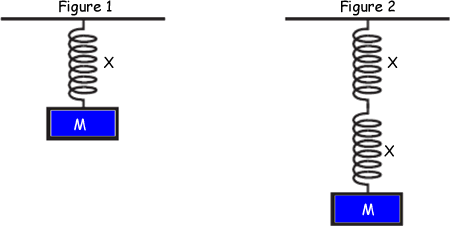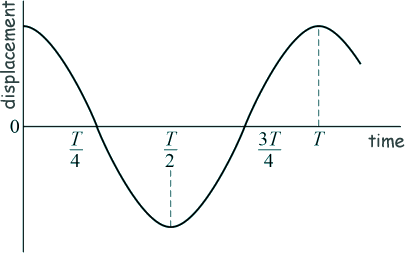Simple Harmonic Motion - Multiple Choice Questions Q21. A particle of mass m oscillates in a straight line with simple harmonic motion of constant amplitude. The total energy of the particle is E. What is the total energy of another particle of mass 2m, oscillating with simple harmonic motion of the same amplitude but double the frequency?
Q22. When a mass suspended on a spring is displaced, the system oscillates with simple harmonic motion. Which one of the following statements regarding the energy of the system is incorrect?
Q23. When a mass M attached to a spring X, as shown in Figure 1, is displaced downwards and released it oscillates with time period T. An identical spring is connected in series and the same mass M is attached, as shown in figure 2.
What is the new time period?
Q24. Which graph best shows how the kinetic energy of a simple pendulum varies with displacement from the equilibrium position?
Q25. The sketch-graph below shows how the displacement of a particle performing simple harmonic motion varies with time.
Which statement is not correct?
|
Follow me...
|








